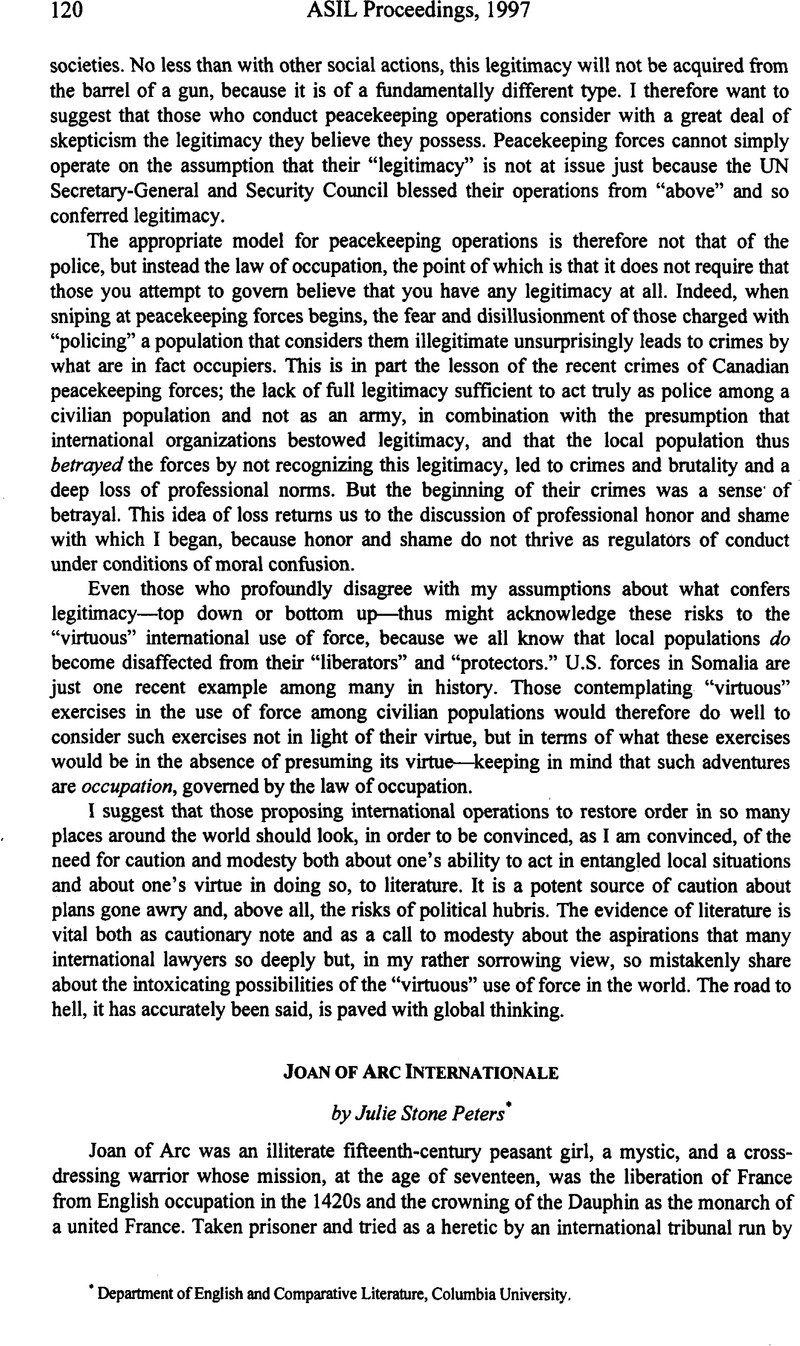No CrossRef data available.
Published online by Cambridge University Press: 28 February 2017

1 Marie-Claire Bancquart, Les Ecrivains et L’histoire 298 (1966).
2 William Paul Yancey, The Soldier Virgin of France: A Message of World Peace (1926).
3 Van Kan, J., An Historical Point of View, in Saint Joan Fifty Years After 1923/24-1973/74, at 49, 49 (Weintraub, Stanley ed., 1973)Google Scholar.
4 George Bernard Shaw, Saint Joan: A Chronicle Play in Six Scenes and an Epilogue 130 (1957) (hereafter cited in the text).
5 George Bernard Shaw, Geneva, in Plays Political: The Apple Cart, On the Rocks 316 (1986).
6 Id. at 323.
7 Id. at 339.
8 George Bernard Shaw, Peace Conference Hints (1919).
9 Cuomo, Glenn R., Saint Joan before the Cannibals: George Bernard Shaw in the Third Reich, 16 German Stud. Rev. 435, 453 (1993 CrossRefGoogle Scholar).
10 Id at 439, 440.
11 Matthew Melko, Peace in Our Time 1 (1990) points out that what Chamberlain actually said was “I believe it is peace for our time, ” but the phrase is always quoted as “peace in our time.” Shaw may have been thinking of Benjamin Disraeli’s claim in 1878, after the Congress of Berlin, that he had brought “peace, I hope, with honor” and, in a letter to Queen Victoria after the Congress, that the settlement would “secure the peace of Europe for a long time.” Id at 1.
12 Brecht, Bertolt, Saint Joan of the Stockyards 58, 85, 97 (Jones, Frank trans., 1969)Google Scholar (hereafter cited in the text).
13 Keith A. Dickson, Towards Utopia: A Study of Brecht 162 ( 1978).
14 Brecht, Bertolt, The Visions of Simone Machard, in 7 Collected Plays 1, 41 (Manheim, Ralph trans., 1975)Google Scholar.
15 Brecht, Bertolt, The Trial of Joan of Arc at Rouen, 1431, in 9 Collected Plays 147, 153 (Manheim, Ralph & Sauerlander, Wolfgang trans., 1972)Google Scholar.